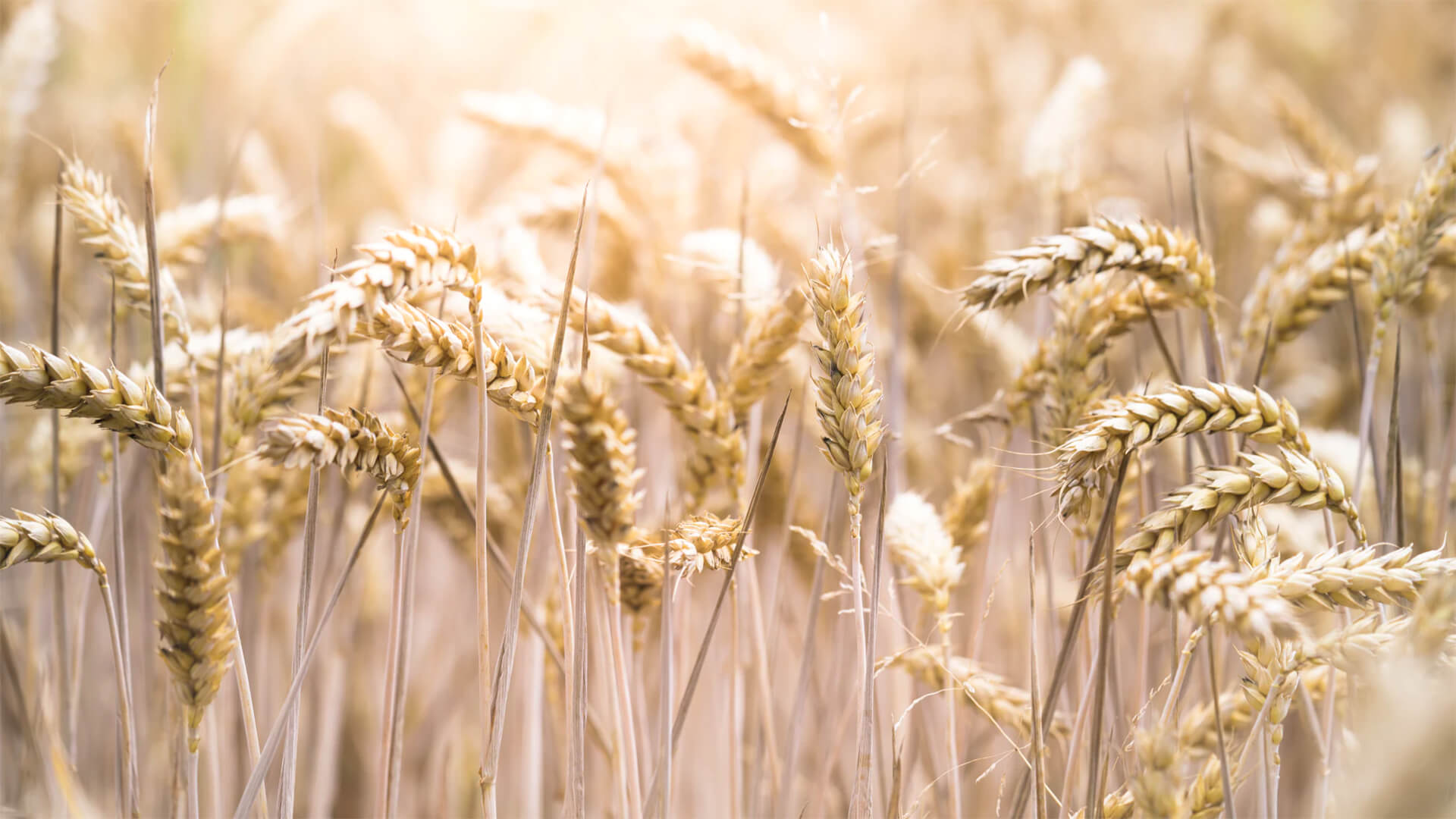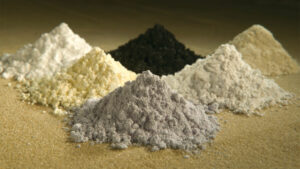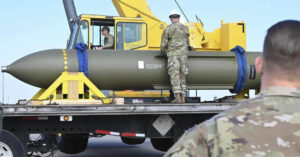Yesterday’s newsletter traced some of the issues that erupt when global transport gets wrecked. Today we’re going to cross that same initial problem into the world of agriculture.
It isn’t so much that plummeting oil demand globally hits agricultural production directly. If anything, cheaper oil translates not only into cheaper diesel fuel, but also key petrochemical outputs: things like pesticides and fertilizer are typically petroleum-derived. Instead, we’re going to have to hit this from another angle.
Take a look at this graph from Our World in Data:
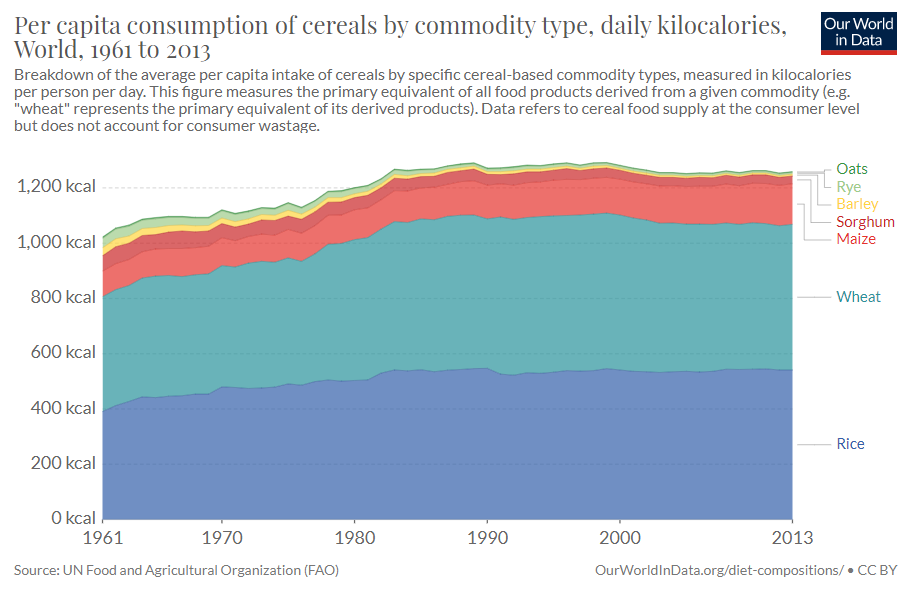
Most of the world counts rice or wheat as their primary source of grain-based calories. So you’d think that either rice or wheat holds the top spot in international grain trade, right?
Wrong.
Corn is the winner of that particular contest by the proverbial country mile.

Most of you probably live in North America, and so probably don’t find this all that odd. Cornbread. Corn on the cob. Grits. Corn flakes. Tortillas. These are all part and parcel of our collective experience. In the rest of the world, however, once you get past polenta, corn isn’t used for much more than to line a bread pan. So why in the world is corn the top grain?
Check this out:
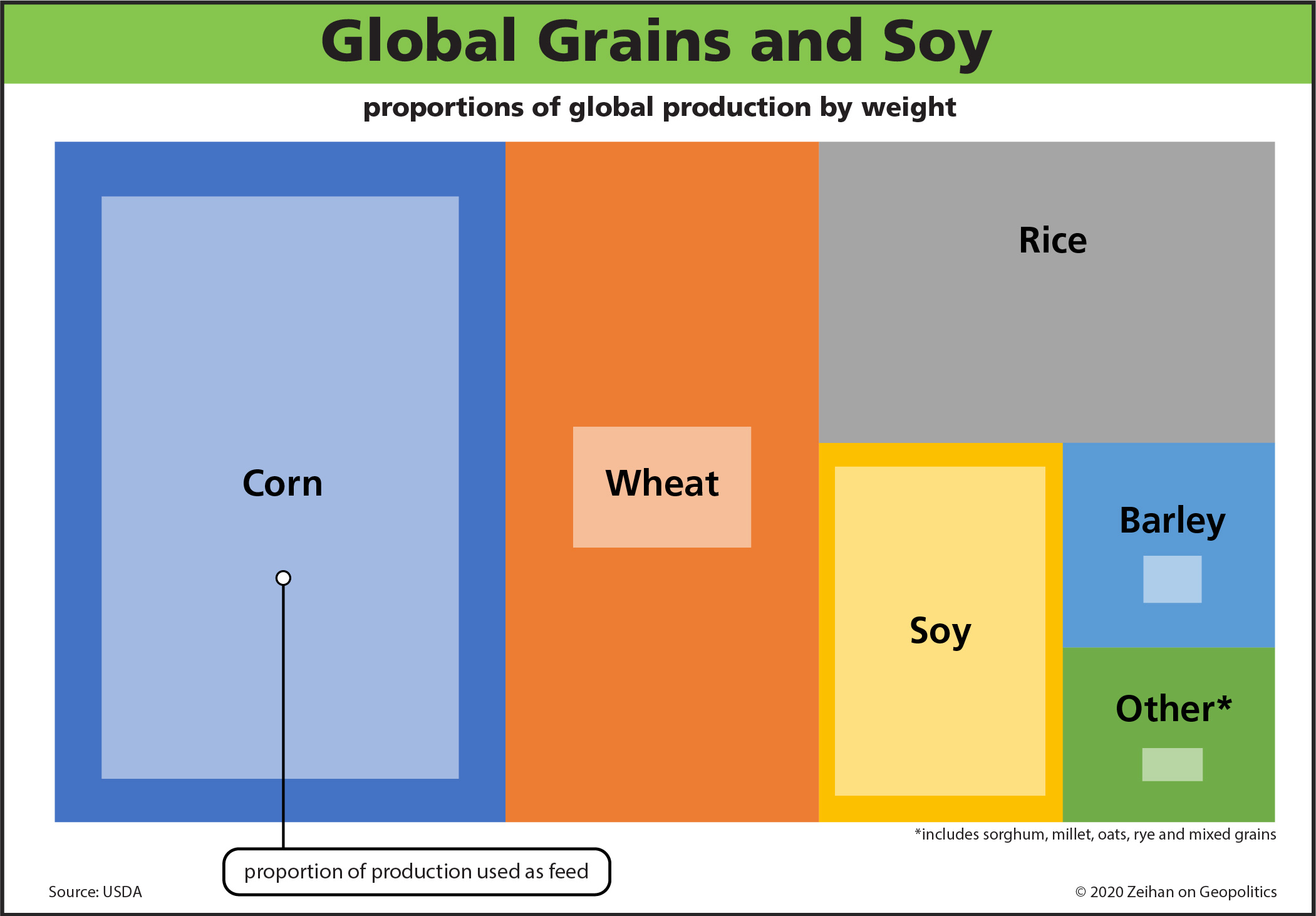
Most of the world’s corn isn’t eaten by people; but instead it is eaten by things people eat. Primarily cows, hogs and chickens.
One of the quirks of the American-led global Order that has dominated the world since World War II is that countries that normally couldn’t be physically secure or economically successful on their own suddenly could. For many that meant steadily increasing standards of living. That meant they wanted more and better food. Most people define more and better food as animal protein.
But while the Order radically changed the geostrategic environment, it didn’t touch the physical environment. If your climate and soil prevented you from growing a lot of of food before, you probably still couldn’t no matter what the Americans did or did not do. What you could do is build up an animal herd, and import the fodder to fatten it up. And so that’s what was done. Pretty much everywhere.
Enter coronavirus.
Global transport has crashed. The Americans used to use about half the corn they produced specifically to produce ethanol, a biofuel they mix into their gasoline. Since Americans are not driving, their need for ethanol has crashed right along with their need for gasoline. The United States is both the world’s largest producer and exporter of corn. American farmers are planting their crops right now, and so far they are planting just as much corn as before.
With US transport demand unlikely to recover this year, we’re looking at gross global corn oversupply with the expected downward pressure on corn prices. Globally, this is great. It implies little risk (at least on the supply side) to global meat production. Among major corn producers, in contrast, it suggests quite the glut. Corn farmers the world over – most notably in the United States, China, Argentina and Brazil – be warned.
Join Peter Zeihan and Melissa Taylor April 30th for an in-depth discussion and presentation on the impact of COVID-19 on global agricultural production and the stability of the world’s food supply.
Future planned invents include:
- Transport and Supply Chains
- Manufacturing
- Industrial Commodities
If you enjoy our newsletters, please consider showing your appreciation through a donation to Feeding America if you are able to do so. One of the biggest problems the country faces at present is food dislocation: pre-COVID, nearly 40% of all foods were not consumed at home. Instead they were destined for places like restaurants and college dorms. Shifting the supply chain to grocery stores takes time and money, but people need food now. Some 23 million students used to be on school lunches, for example. That servicing has evaporated. Feeding America helps bridge the gap between America’s food supply (which remains robust) and its demand (which coronavirus has shifted faster than the supply chains can keep up).
A little goes a very long way. For a single dollar, FA can feed one person for three days.

